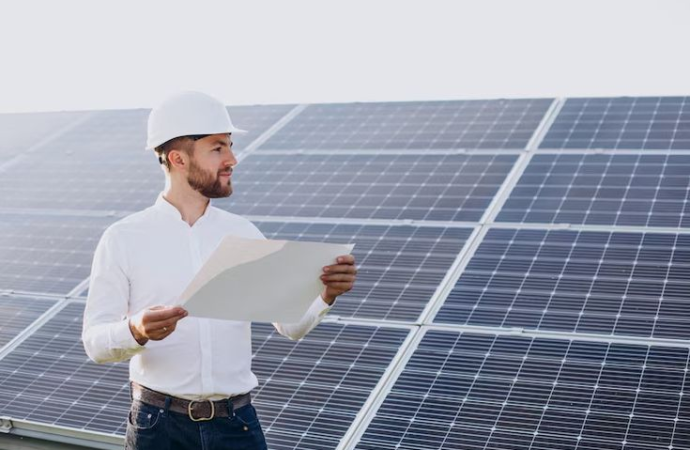Introduction Switching to solar power is no longer a luxury—it’s becoming a necessity in Pakistan. With rising utility bills, frequent power outages, and increased awareness of climate change, more homeowners and businesses are investing in solar technology. However, buying solar panels isn’t just about selecting the first available option or chasing the cheapest quote. There’s
Introduction
Switching to solar power is no longer a luxury—it’s becoming a necessity in Pakistan. With rising utility bills, frequent power outages, and increased awareness of climate change, more homeowners and businesses are investing in solar technology. However, buying solar panels isn’t just about selecting the first available option or chasing the cheapest quote. There’s a lot you should consider to make a smart and long-term investment. Whether you’re looking for residential, commercial, or hybrid systems, understanding the solar panel price in Pakistan is just the beginning.
Why Solar Energy Makes Sense in Pakistan
Pakistan is among the sunniest countries in the world, receiving 7 to 9 hours of sunlight daily. This makes it a perfect candidate for harnessing solar energy. With the government encouraging renewable energy and the cost of grid electricity steadily rising, solar panels offer an effective way to lower bills, reduce reliance on power companies, and contribute to a sustainable future.
In addition to this, solar systems offer independence from power cuts and voltage fluctuations—common problems faced in many regions across Pakistan. Once installed, a solar power system has minimal operational costs, making it a reliable and cost-effective energy solution in the long run.
Understand Your Energy Needs First
Before you even begin browsing panel options, you should evaluate your electricity consumption. This will help you determine the size of the system you require. For example:
- A small home might need a 3kW system to run fans, lights, and a small fridge.
- A medium-sized home using air conditioners may need a 5kW system.
- Large houses or small businesses may require 10kW or more.
Understanding your monthly electricity usage from your bills will help an installer suggest the right system for you. It ensures you don’t overpay for an oversized system—or end up with insufficient power.
Types of Solar Panels: Choose Wisely
There are three main types of solar panels available in Pakistan:
- Monocrystalline Panels: Known for high efficiency (up to 22%) and long lifespan. Great for limited roof space but costlier.
- Polycrystalline Panels: More budget-friendly but offer slightly lower efficiency.
- Thin-Film Panels: Lightweight and flexible, but less efficient. Mostly used in commercial or specialty installations.
The type you choose should match your budget, space, and long-term expectations. It’s worth investing in quality to ensure performance and durability over 20–25 years.
Do You Need a Battery Backup?
Adding batteries to your solar setup depends on your energy requirements and local conditions. If you face frequent power outages, then having a battery backup system is crucial. There are two main types:
- Lead-Acid Batteries: Inexpensive but bulky, and they require regular maintenance.
- Lithium-Ion Batteries: Compact, efficient, maintenance-free—but costlier.
Many users opt for hybrid systems with battery backup and net metering capabilities for the best of both worlds: energy security and grid interaction.
The Role of the Inverter
The inverter is the heart of a solar system—it converts DC power from panels to AC power for your home. There are three major types:
- On-Grid Inverters: Work with the grid. Suitable for users in urban areas.
- Off-Grid Inverters: Ideal for remote areas with no power connection.
- Hybrid Inverters: Combine the best of both, supporting grid and battery storage.
A quality inverter ensures system stability, efficiency, and a longer lifespan. Always opt for reputable brands with proper warranty and service options.
Net Metering: Turn Extra Power into Savings
One of the biggest benefits of installing a solar system in Pakistan is net metering. This allows you to feed excess energy back to the national grid, reducing or even eliminating your electricity bills.
To qualify for net metering:
- Your system must be on-grid or hybrid.
- The installer must be licensed by NEPRA.
- You’ll need a bidirectional meter, which tracks incoming and outgoing energy.
Once active, any surplus units generated by your solar panels are credited to your account, effectively lowering your energy cost over time.
What Influences the Cost of a Solar System?
Several factors determine the overall cost:
- System Size: More panels and higher wattage increase the price.
- Panel & Inverter Brand: Imported, branded options are more expensive but more reliable.
- Installation Complexity: Custom roof structures, cable length, or battery requirements can increase costs.
- Net Metering & Licensing Fees: Legal setup adds to upfront cost but pays off later.
Always get a detailed quote from the installer and ask for a breakdown of labor, materials, and after-sales support.
Warranties, Maintenance & Installer Credibility
Solar systems are low-maintenance but not maintenance-free. You should:
- Clean panels every 2–4 weeks to maintain efficiency.
- Schedule inspections once or twice a year.
- Ensure your installer provides at least a 10-year warranty on panels and 5+ years on inverters.
Always choose a reputable company or platform with verified reviews. A trusted name not only offers better equipment but also ensures proper paperwork for net metering and post-installation support.
Conclusion: A Long-Term Investment Worth Making
Investing in solar panels isn’t just about cutting your electricity bills—it’s about making a long-term commitment to energy independence and environmental sustainability. With so many technological advancements and government-supported policies, it’s now easier than ever to make the switch.
Before purchasing, make sure you’ve assessed your energy needs, chosen the right panel and inverter types, understood battery options, and selected a trustworthy installer. While the initial cost might seem high, the return on investment over the next 10–20 years will more than compensate for it.
Take your time, ask questions, and don’t rush the process. A well-planned solar setup will not only power your home but also secure your energy future.
















